Intro
Critical in the compression of extensive video files into more compact formats, video codecs serve a pivotal role in facilitating efficient storage and rapid streaming. Among the frequently utilized codecs, H.265 and H.264 take center stage. But what sets these two apart, and which one suits your needs better? This blog delves into the similarities and distinctions between H.265 and H.264, providing insights into their advantages and limitations.
The definition of the Video Codec
To begin with, let's establish the foundation by defining what a video codec is. A codec serves as a crucial software tool for compressing and decompressing digital video files, ensuring efficient storage and rapid streaming. With this understanding, we'll delve into the species of H.264 and H.265.
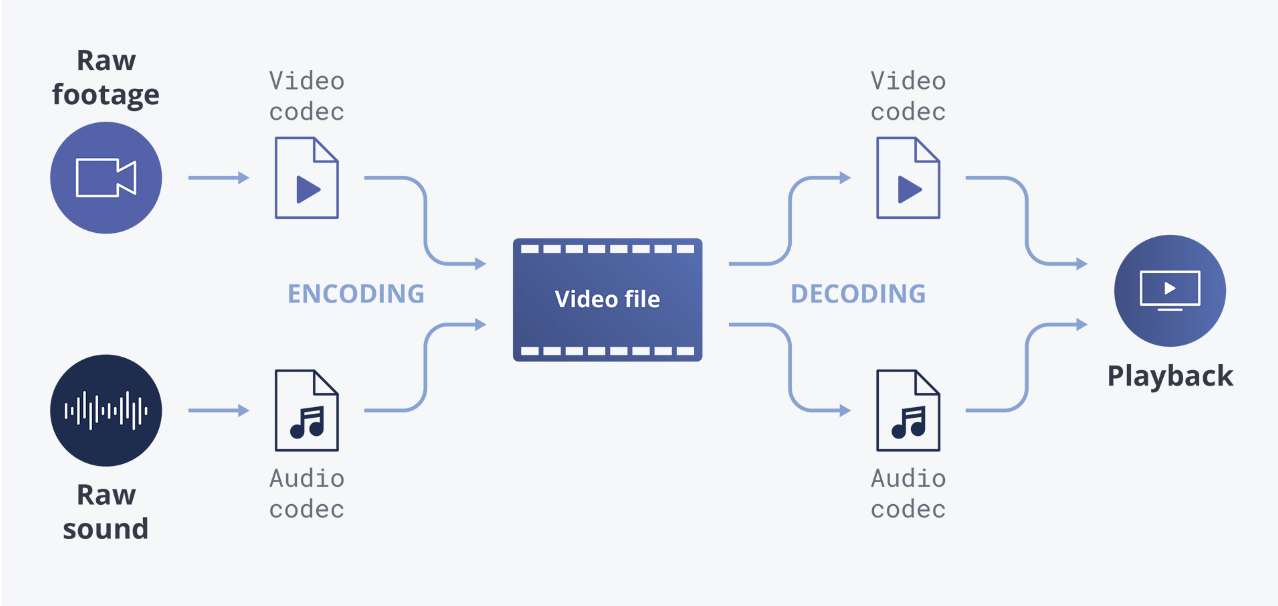
(Source:https://shorturl.at/wBMU9)
What is H.264?
H.264, known as Advanced Video Coding (AVC), is a widely used video compression standard that was introduced by the International Telecommunication Union. It offers high-quality video compression with a low bit rate—a key factor for internet video streaming.
What is H.265?
H.265, also known as High Efficiency Video Coding (HEVC), is a video compression standard designed to improve upon the efficiency of its predecessor, H.264. Like H.264, H.265 is a collaborative effort by the International Telecommunication Union. It can achieve up to 50% more compression than its predecessor. This makes it an excellent option for high-resolution video formats.
What’s the main difference between H.265 and H.264?
Diving into the comparison, both H.265 and H.264 are powerful tools, yet they differ significantly. The primary divergence lies in compression efficiency, where H.265 outshines H.264 by achieving up to 50% more compression. This capability positions H.265 as the go-to choice for high-resolution formats like 4K and 8K.

(Source:https://shorturl.at/anRZ5)
The advantages of H.264
High Compression Efficiency: It can significantly reduce the file size of video content while maintaining relatively good video quality. This efficiency is crucial for streaming services, video conferencing, and other applications.
Broad Industry Adoption: H.264 has gained widespread adoption and support across various devices, platforms, and applications. This ubiquity ensures seamless playback and interoperability across different systems.
Less complexity: H.264 boasts simpler compression algorithms , resulting in easier video decoding and encoding processes.
The advantages of H.265
Improved Compression Efficiency: H.265 achieves higher compression efficiency compared to its predecessor, H.264. This means that it can maintain better video quality at lower bitrates, reducing the file size of compressed videos.
Enhanced Video Quality: With more advanced compression techniques, H.265 delivers superior video quality, especially at lower bitrates. This is beneficial for applications like 4K and HDR video streaming.
Support for Higher Resolutions and Frame Rates: This makes it suitable for emerging technologies such as 4K Ultra HD and high-frame-rate video content.
H.264 vs. H.265: Which is better?
The choice between H.264 and H.265 depends on the specific needs of the application. H.265, offers superior compression efficiency compared to H.264. It can deliver similar or better video quality at lower bitrates, making it ideal for scenarios with bandwidth constraints. H.265's ability to support higher resolutions (such as 4K and 8K) and higher frame rates positions it as a more future-proof option for applications demanding higher visual fidelity.
However, H.264 has its merits, particularly in terms of widespread compatibility and lower hardware requirements. It is supported across a broad range of devices and platforms, making it a practical choice where ensuring playback on diverse systems is crucial.
In summary, H.265 is favored for applications prioritizing compression efficiency, higher resolutions, and future scalability. On the other hand, H.264 remains a solid choice when compatibility across various devices, especially those with older hardware, is a primary consideration. Therefore, the decision between H264 and H265 needs to be based on the specific needs of the user.
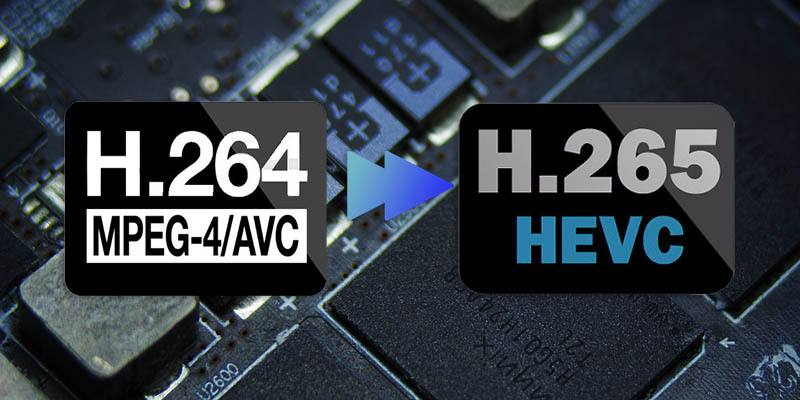
(Source:https://shorturl.at/pyJK5x)
The New Update of the NearStream App
NearStream has just rolled out its latest update - Version 2.3.0, bringing a slew of exciting features, improvements, and bug fixes. Among the standout enhancements, the introduction of HEVC/H.265 support for mobile device recording takes center stage, revolutionizing the way users capture and stream content.
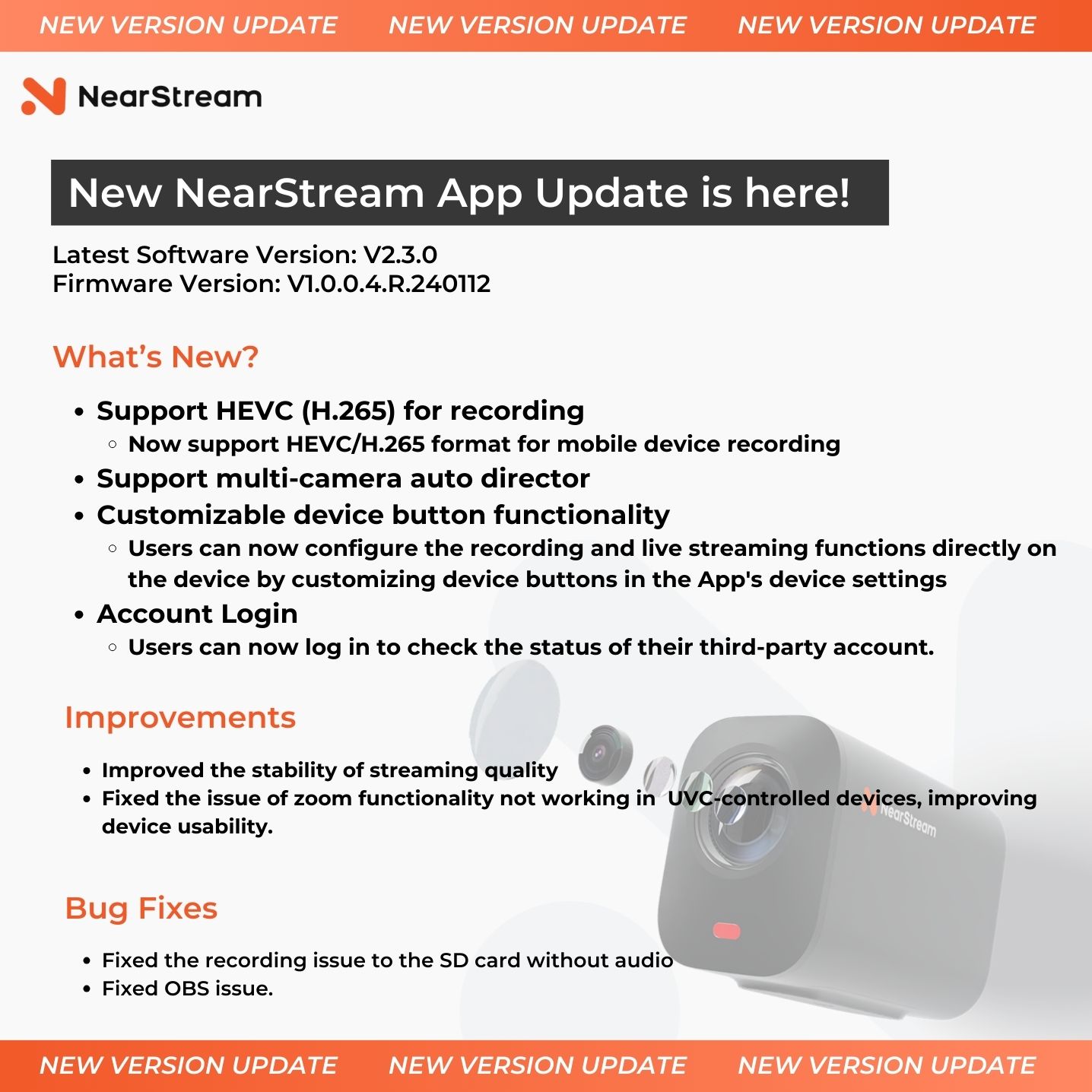
1. Unleash the power of H.265/HEVC
The significant feature of this update is the incorporation of HEVC/H.265 support for mobile device recording. This cutting-edge video compression technology delivers superior efficiency, significantly reducing file sizes without compromising on quality. Users can now capture and record high-resolution videos on their mobile devices with NearStream, experiencing enhanced clarity and detail.
HEVC/H.265 is particularly noteworthy for its ability to maintain excellent video quality at lower bitrates, making it an ideal choice for streaming and recording on mobile devices with limited bandwidth. The update ensures that NearStream users can enjoy smoother and more efficient recording experiences, especially in bandwidth-constrained scenarios.
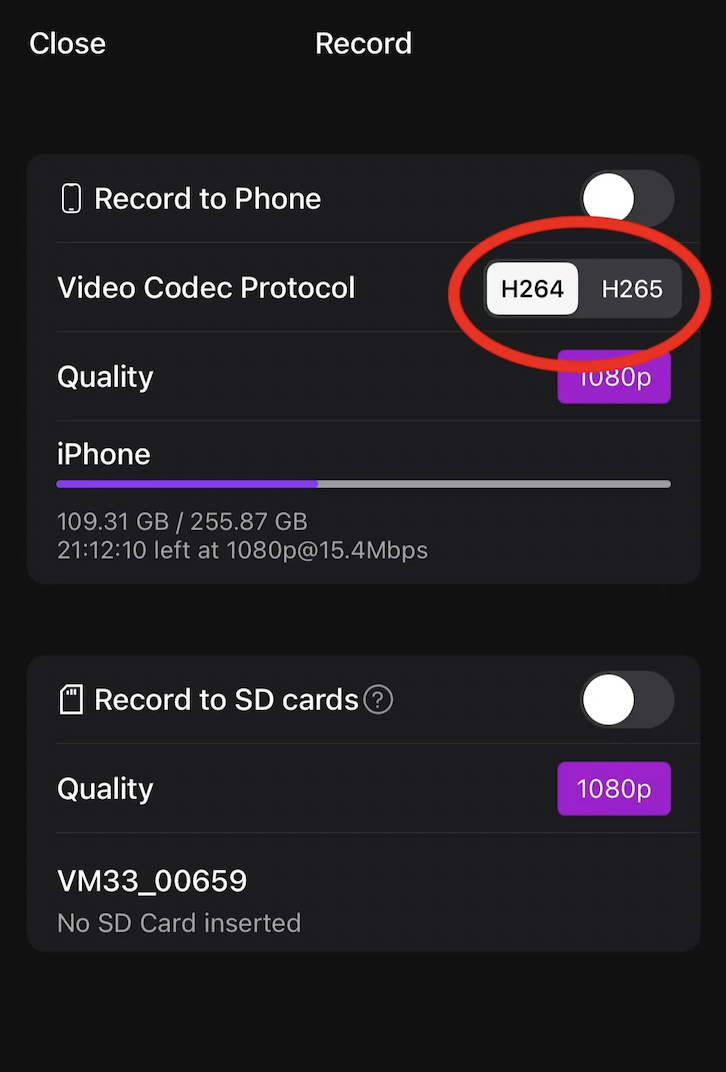
2. Support auto-director
It allows users to effortlessly switch between multiple cameras during recording or live streaming. This feature caters to content creators, enabling them to produce dynamic and engaging videos with ease.
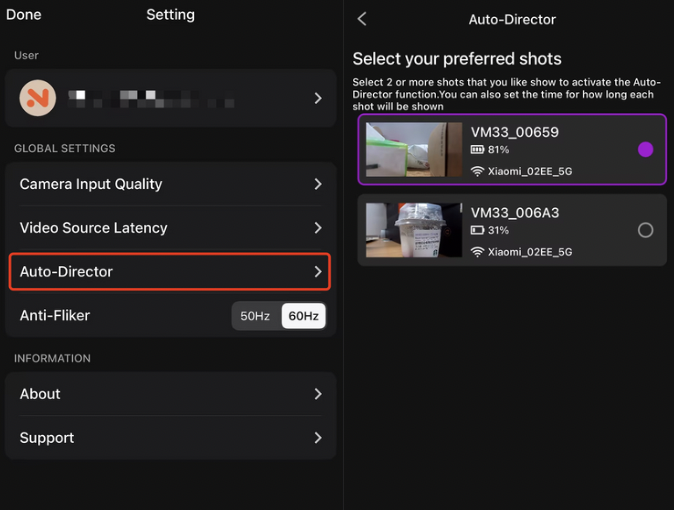
3. Support customizable device buttons
With the latest update, users gain the ability to customize device buttons directly within the app's settings. This empowers users to tailor their recording and live-streaming functions according to their preferences, providing a streamlined and personalized experience.
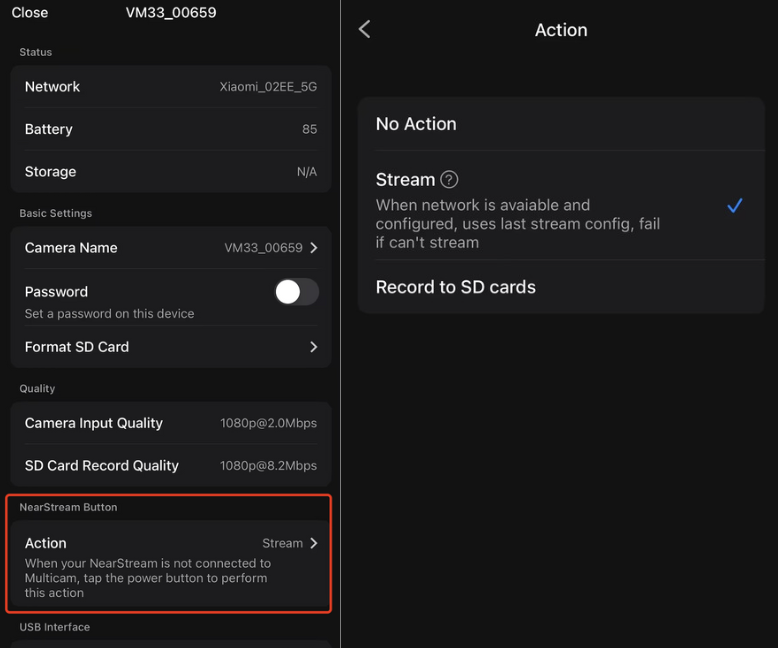
Conclusion
The comparison between H.265 and H.264 highlights the evolving landscape of video codecs, each offering distinct advantages. NearStream App's latest update is aimed at meeting the diverse needs of users, providing them with cutting-edge features and a seamless experience. To support HEVC/H.265 for mobile device recording marks a significant leap forward, empowering users to capture high-quality content efficiently. As content creation continues to evolve, NearStream remains at the forefront, enabling users to unlock new possibilities in recording and streaming on their mobile devices. Upgrade to version 2.3.0 now and experience the future of content creation with NearStream.






















